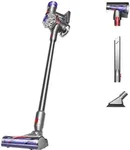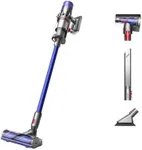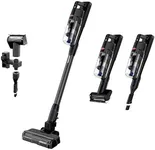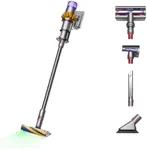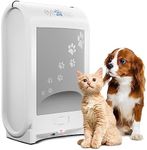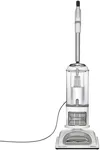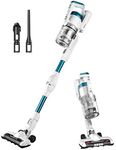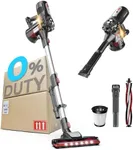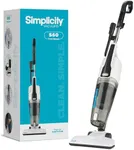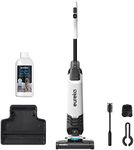Buying Guide for the Best Vacuum For Pet Hair
Choosing the right vacuum for pet hair can make a significant difference in maintaining a clean home, especially if you have furry friends. Pet hair can be stubborn and challenging to remove, so it's essential to select a vacuum that is specifically designed to handle it. When shopping for a vacuum for pet hair, consider the following key specifications to ensure you get the best fit for your needs.Suction PowerSuction power is the force with which the vacuum pulls in dirt and debris. This spec is crucial for picking up pet hair, which can be deeply embedded in carpets and upholstery. Higher suction power means better performance in removing pet hair. Suction power is often measured in watts or air watts. For homes with multiple pets or heavy shedders, a vacuum with higher suction power is recommended. For lighter shedding, a moderate suction power may suffice.
Brush RollThe brush roll is a rotating brush that helps lift and agitate dirt and hair from surfaces. This feature is particularly important for pet hair, as it can get tangled in carpet fibers. Look for vacuums with a motorized brush roll, which provides more effective cleaning. Some models offer tangle-free brush rolls, which prevent hair from wrapping around the brush, making maintenance easier. If you have a mix of carpet and hard floors, consider a vacuum with an adjustable or switchable brush roll.
Filtration SystemA good filtration system is essential for capturing pet dander and allergens, which can be a concern for pet owners with allergies. HEPA (High-Efficiency Particulate Air) filters are the gold standard, as they can trap 99.97% of particles as small as 0.3 microns. If you or anyone in your household has allergies, a vacuum with a HEPA filter is highly recommended. For general use, a vacuum with a good quality standard filter may be sufficient.
Bagged vs. BaglessVacuums come in bagged and bagless varieties, each with its pros and cons. Bagged vacuums tend to be better at containing dust and allergens, as the bag traps everything inside. This can be beneficial for allergy sufferers. Bagless vacuums, on the other hand, are more convenient and cost-effective, as you don't need to buy replacement bags. However, emptying the dustbin can release some dust back into the air. Consider your preference for convenience versus allergen containment when choosing between the two.
Attachments and AccessoriesAttachments and accessories can enhance the vacuum's ability to clean pet hair from various surfaces. Look for vacuums that come with specialized pet hair tools, such as a pet hair brush, upholstery tool, or crevice tool. These attachments can help you clean furniture, stairs, and other hard-to-reach areas more effectively. If you have multiple types of surfaces to clean, ensure the vacuum comes with a versatile set of attachments.
Weight and ManeuverabilityThe weight and maneuverability of the vacuum are important for ease of use, especially if you have a large home or multiple floors. Lighter vacuums are easier to carry and move around, while those with swivel steering or a flexible hose can navigate around furniture and tight spaces more easily. If you have a large area to clean or physical limitations, opt for a lightweight and highly maneuverable vacuum.
Noise LevelThe noise level of a vacuum can be a consideration, especially if your pets are sensitive to loud sounds. Quieter vacuums can make the cleaning process less stressful for both you and your pets. Noise levels are usually measured in decibels (dB). Vacuums with noise levels below 70 dB are considered relatively quiet. If noise is a concern, look for models specifically designed to operate quietly.
